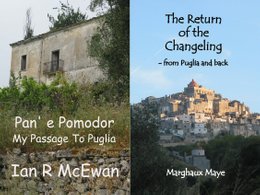Tenuta Villa Oleandro
About Villa Oleandro
According to the only remaining living person who actually lived here (albeit briefly), the two old ladies who were the last permanent residents abandoned it shortly after the Second World War. When we bought it, thanks to the local share-and-share-alike inheritance customs, the house was owned by so many people that they had "thrown away" the key. With the doors open the house was used for shelter by any passer-by or animal and was pillaged by all and sundry.
One of the double doors was barely hanging on its hinges, the other leant against a wall on what remained of the stairway. The stone mullion door surrounds were long gone, though strangely the pedestal stones were still in place, as in fact were the stunning quatrefoil carved stone mullions of two small windows. Most of the flagstone floors had been ripped up and carted away along with most of the staircase stone treads. The windows, shutters and internal doors were beyond saving for re-use (3 of which I did manage to salvage and turn into mirrors), though amazingly a few 80 year old panes of glass were still intact. There was no water, no electricity and of course, there was no sewerage.
Trees had taken hold in the roof along with a lot of other vegetation. Rainwater was getting in everywhere, plaster was falling off the walls, debris littered the floors and cracks were beginning to show in the upper walls. Our builder assured us that these were superficial though in the next breath he told us that the house was on its last legs and that a couple of bad winters would see it off.
The house was a shell, well on its way to total dereliction, but it did have a few redeeming features. We were astounded and excited by the general imposing presence of the building and the beauty of the interiors. Every room had a vaulted ceiling, including the stable, most of them 4 meters high. And the wide two-flight staircase had a semi-circular vaulted ceiling with a cross-vault above the first landing. We were enchanted. Unconsciously we immediately gave each room its designated future role and referred to the place as “our house”.
Eventually the 10 owners were tracked down and we finally managed to buy the house, almost 12 months to the day after first seeing it. We then spent some 2 years restoring, renovating and extending; we connected to the electricity grid, drilled a well, restored and covered one of the existing water storage tanks and managed to get a telephone connected.
Then we sorted out the outdoor spaces starting by clearing the jungle of brambles and weeds that obscured the front terrace and the house up to a height of about 2 meters. Villa Oleandro sits on rock and is now fronted by a 300 sqm terrace, edged with stone walls and traditional pillars that support pergolas with vines and flowering plants. Stairs descend to a further terrace, dubbed Middle Earth, which in turn steps down to another larger terrace. Here, known as the pool terrace since the first ever viewing, we eventually (after three applications and a prolonged wait for building permits) constructed our beautiful swimming pool - the jewel in the Tenuta Villa Oleandro crown.
Our lifestyle here is almost unique - in the Gargano, very few of the locals like to live out in the countryside. That, according to tradition, is only for the summer months, so nearly everyone lives in the towns. Our views to the sea are over an ocean of olive groves and woodlands owned by people who almost all live in Vico del Gargano. There are a few houses, or ruins, dotted around the valley; these remain closed up, unused or completely abandoned. As was Villa Oleandro, until 2004!
Pan' e Pomodor
- My Passage to Puglia
by
Ian R McEwan
&
The Return of the Changelling
- from Puglia and back
by
Marghaux Maye
Tenuta Villa Oleandro
Extra Virgin Olive Oil
Single Estate Cold Pressed
Superior quality oil obtained directly from "Ogliarola Garganica" olives using only mechanical methods.
